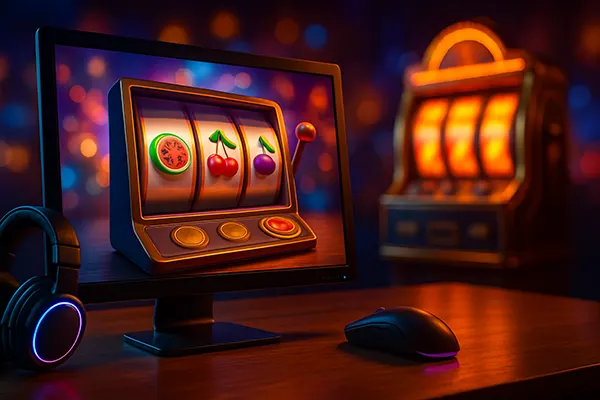The Psychology of Gambling: How Casinos Use Colours, Sounds and Animations

Casinos are meticulously engineered environments where every design element contributes to shaping user behaviour. From colour palettes to the choice of background music, psychological principles are at the heart of encouraging continued play. This article dives deep into the techniques used by casinos to influence decision-making and emotional engagement.
Colour Psychology and Gambling Behaviour
Colours in casinos are not chosen arbitrarily. Each hue evokes specific emotions and behavioural responses. Red, for example, is widely used in online and land-based casinos because it is known to increase energy and arousal. It creates a sense of urgency, which can lead to faster decision-making and longer play sessions.
Blue and green shades are often used to create a relaxed atmosphere. These colours are associated with calmness and safety, subtly reducing players’ sense of risk. This soothing backdrop encourages users to stay longer and explore more games without the psychological burden of potential loss.
Gold and purple represent luxury and success. When used strategically in VIP areas or jackpot announcements, these colours trigger aspirational emotions, encouraging users to chase high-reward outcomes. Combined with sharp contrasts and glowing effects, they reinforce the idea of prestige and achievement.
Case Studies of Colour Use in Modern Casinos
Operators like Betway and Mr Green utilise predominantly dark-themed interfaces with gold highlights to create a premium experience. This combination draws attention to promotional offers and loyalty programmes. The absence of harsh colours like black-on-red also improves readability and user comfort.
Mobile-focused casinos such as Casumo employ pastel backgrounds with soft animations. The gentle colour transitions provide a non-threatening environment, ideal for casual players who may otherwise be intimidated by intense graphics.
In Denmark, casinos have begun adopting lighter colour schemes in compliance with local advertising standards, which discourage overly stimulating visuals. These changes have reportedly improved player retention and satisfaction rates over the last year.
Sound Design and Its Influence on Player Emotions
Sound is one of the most powerful tools in the casino’s psychological arsenal. Pleasant chimes, the sound of coins, and celebratory jingles activate the brain’s reward system, particularly the release of dopamine. This neurochemical response reinforces winning behaviour, even if the actual monetary gain is minimal.
Slot machines use dynamic audio sequences that correspond to gameplay events. For example, increasing tempo signals a near-win, which builds anticipation. Even when a player loses, sounds often mimic success, masking disappointment and prompting further attempts.
Music tempo and genre also affect user engagement. Fast beats may lead to quicker betting patterns, while slower music can extend playtime by inducing a relaxed rhythm. Some platforms even allow personal music preferences, tailoring the auditory experience for individual users.
Auditory Cues and Habit Formation
Studies show that players begin to associate certain sounds with excitement and rewards. For instance, the ding of a winning combination becomes a conditioned stimulus, similar to Pavlov’s dog experiment. These associations form habits over time, increasing frequency of play.
In 2025, several online platforms began using spatial audio to deepen immersion. With stereo separation and directional sound, players report higher satisfaction levels, especially in live casino games where audio realism enhances perceived authenticity.
Regulators in some EU countries are now examining the use of “false win sounds” – where audio feedback is overly positive compared to the actual outcome. The concern is that these sounds can mislead users, leading to riskier gambling behaviour.

Animations and Visual Reinforcement Techniques
Animations are integral to user interface design in online casinos. Flashing lights, spinning reels, bouncing coins – all these elements deliver a sense of motion and energy. Movement naturally draws attention, guiding players toward certain actions like clicking a spin button or claiming a bonus.
Reinforcement animations, such as coin showers or animated fireworks, are frequently triggered even by small wins. This makes the event feel more significant than it truly is. Over time, such visual exaggeration skews a player’s perception of success rates.
Some games include animated narratives, creating mini-stories that unfold with each level or bonus round. These elements promote continued engagement, as users become invested not just in winnings, but in the progression of the storyline.
Gamification and Visual Feedback Loops
Gamification techniques use visual cues to simulate progress and achievement. Level-up bars, experience points, and animated leaderboards tap into users’ desire for progression. These mechanics mirror those found in video games, which are known for their high retention rates.
In 2025, leading developers like NetEnt and Evolution introduced real-time 3D animations in live dealer environments. These visuals enhance realism and player trust, especially in jurisdictions where fairness and transparency are priorities.
Importantly, most of these animations are carefully timed to avoid causing overload. Excessive motion can lead to cognitive fatigue. Therefore, designers use motion pacing – brief pauses between animations – to maintain an optimal experience.
